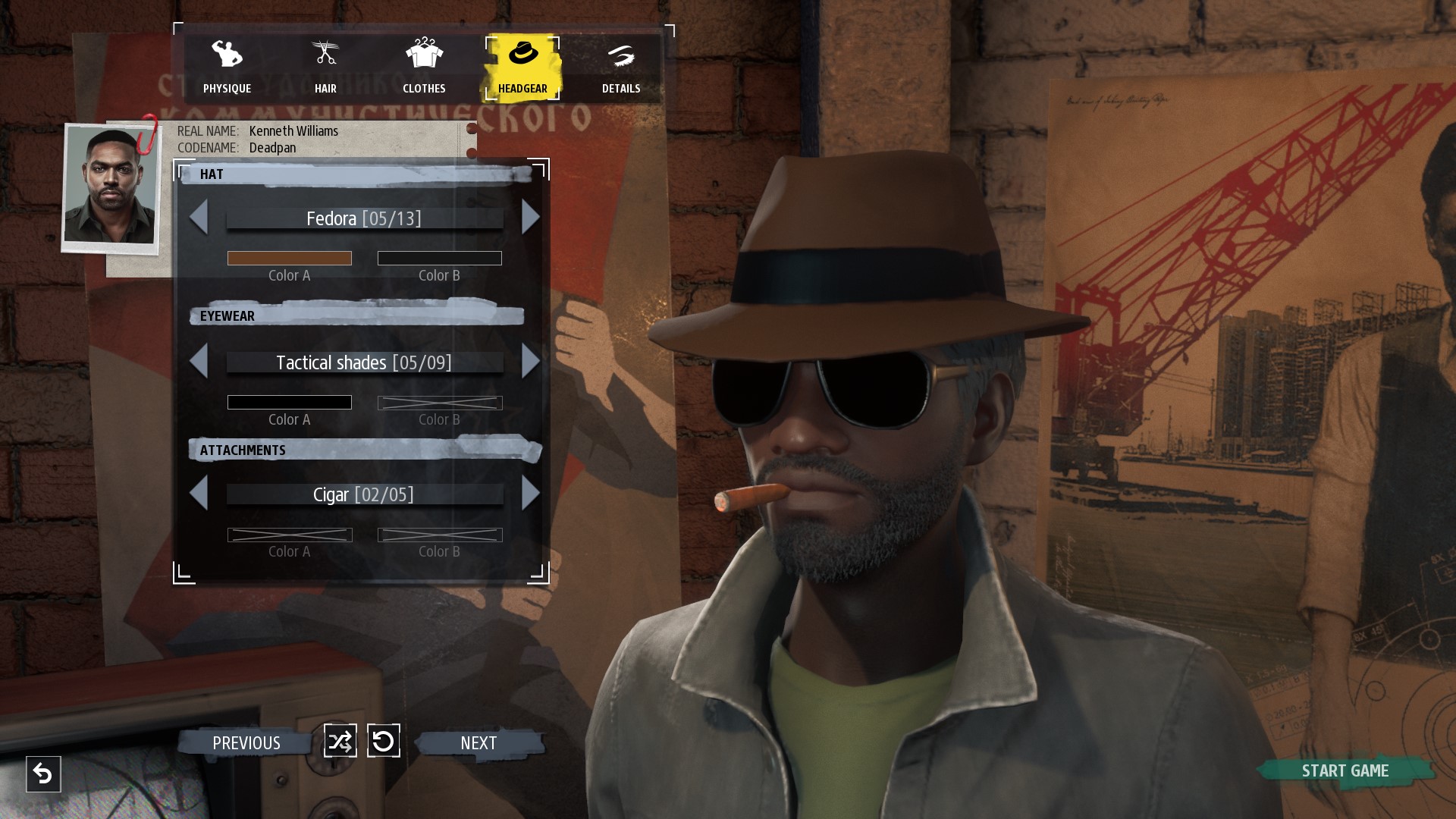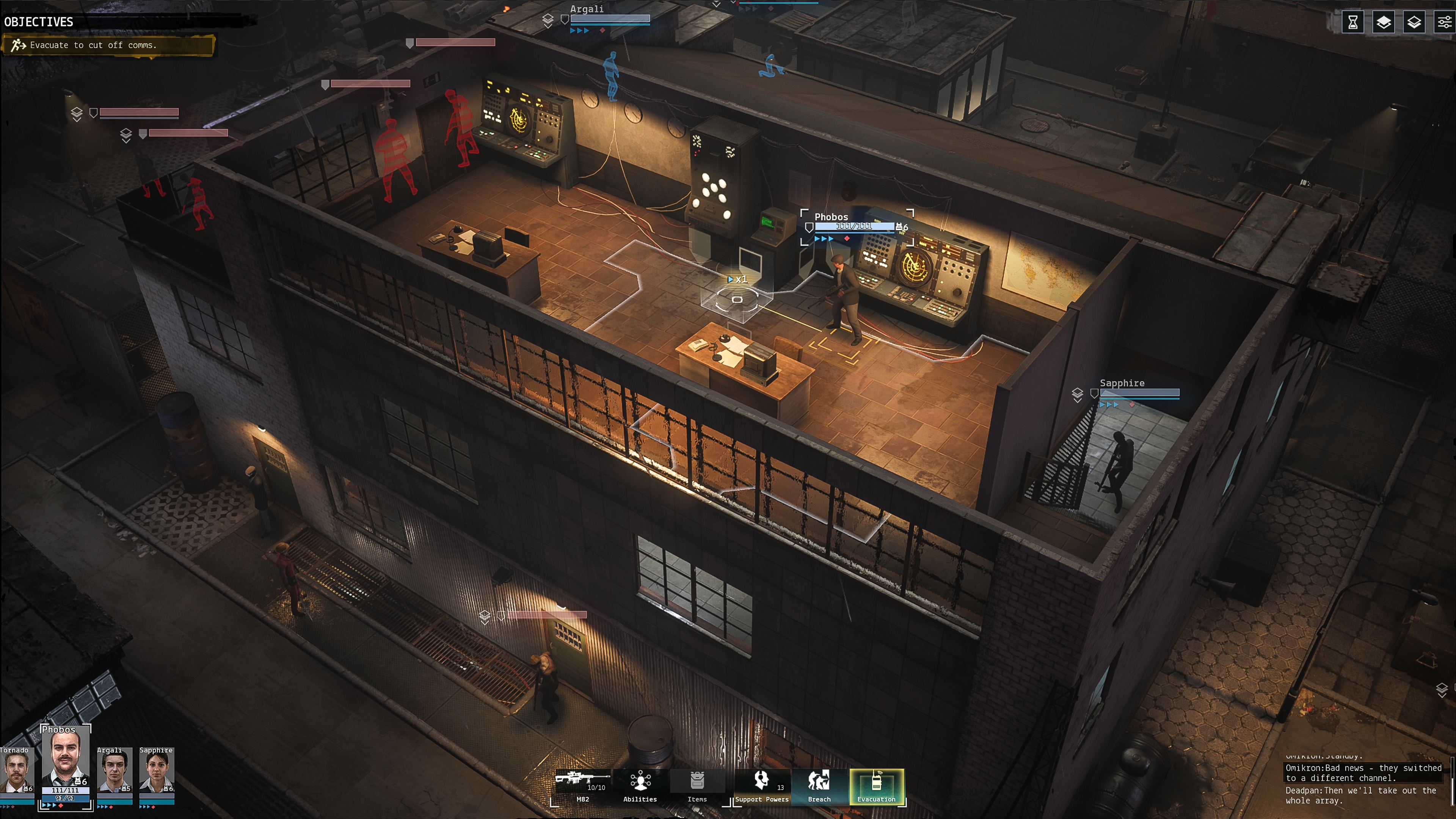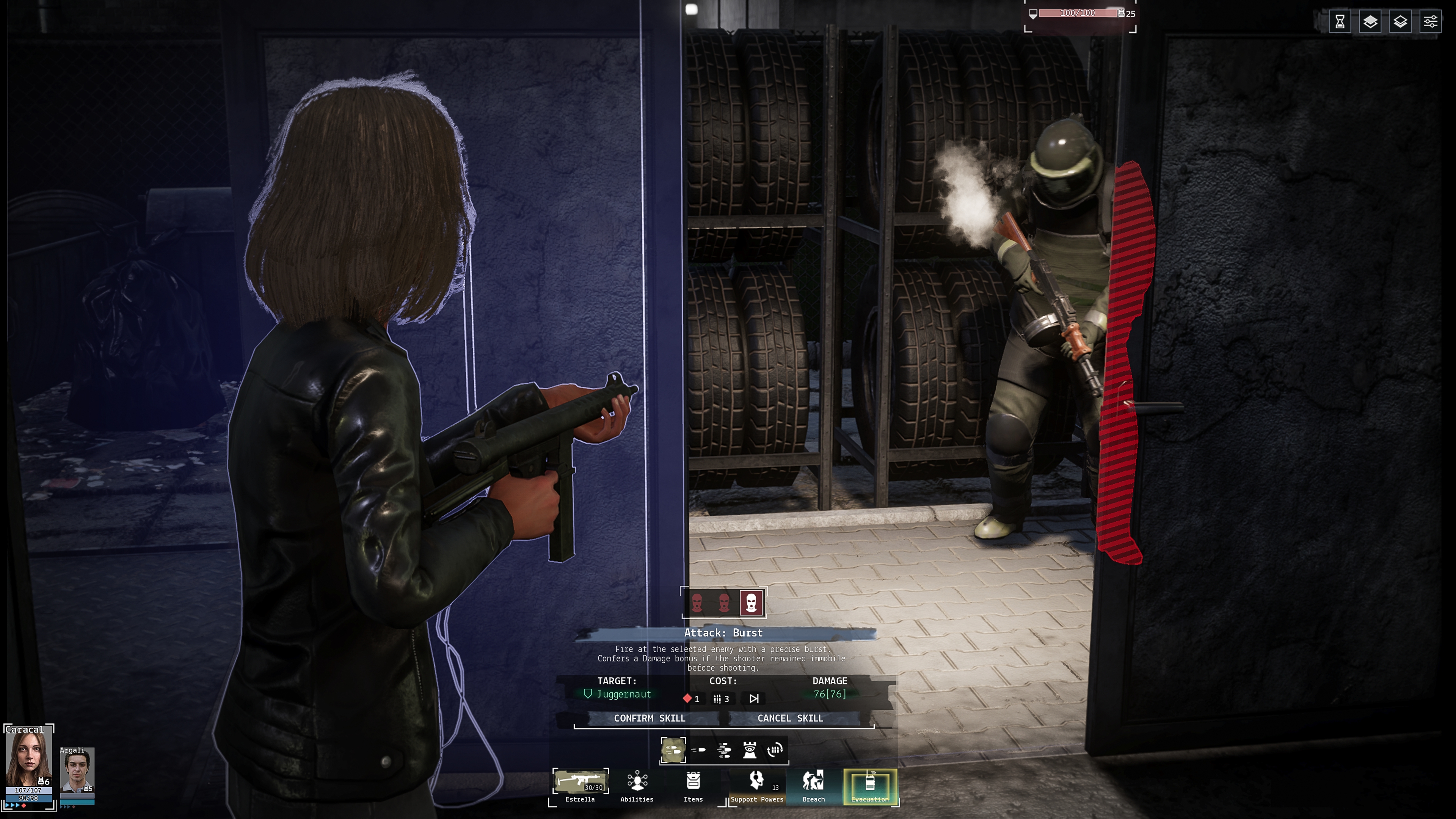Hands-on with turn-based Cold War spy thriller Phantom Doctrine
It's got squad-based tactics and stealth. But the best thing about it might be the corkboard.

There's a thin red line between me and danger. It marks where I can walk carefree, a disguise of a hat and some glasses keeping me safe, and where I'll be at risk of setting off alarms just by being seen. During the infiltration stage of Phantom Doctrine I walk this perimeter, testing the boundary, before finding a choice spot to break it. In this opening level all I have to do is wait for a guard to loop past on his patrol, slip through a fence, disable a security camera, and I'm in.
I'm immediately faced with another guard, but this is all according to plan—he's a sleeper agent who has been brainwashed, and can be activated with a code phrase. (Probably something innocuous like "banana bread".) My brainwashed buddy then explores the red zone freely, and the alarms stay quiet for one more turn.
Phantom Doctrine is set in 1983, during the Cold War but later than you might expect. When I first heard about it I figured it would be more of a 1970s, Tinker Tailor Soldier Spy kind of deal. The advantage of a later setting is more high-tech spy gadgets, with things like GPS a reality. Also the hair is bigger, as I find out in the character creator, which you can go back to whenever an agent needs a new cover identity. There's a nice selection of hats too.

But back to the mission. The sleeper agent walks ahead, silently taking down a guard and clearing the path to the intel we're here to steal. The room it's in has a window, so I call a support agent—a team-mate deployed off the edge of the map—and she looks through a telescope from her position in an overlooking building. Now I can see the entire room, which has two guards keeping an eye on the safe full of documents. If my support was a sniper they could take a shot, but the spotter's ability to lift fog of war and give a temporary damage to bonus within that area will be good enough for us.
It's a simple matter of clicking on, say, a photo of a suspect and dragging a piece of string to a corroborating folder or piece of microfiche, but it quickly becomes a tangle of pushpins and color-coordinated string just like in the movies
I can't send the sleeper in to do another takedown because the second guard will spot him, so it's time to breach. That means getting both of my agents into position at the two entrances and then having them act simultaneously, which adds another damage bonus. It also looks cool, which is very important. They each open a door and fire a spray of machinegun bullets into a separate guard in a single, fluid motion. After taking it in turns for so long, watching co-ordinated simultaneous action like this is cool as hell.
Of course, all that shooting means the alarm finally goes off. This is fine. All we have to do is grab the documents out of the safe and hold our position until evac arrives. During the infiltration stage Phantom Doctrine reminds me of Invisible Inc. but once you go loud it starts to feel like XCOM, complete with the little shield icons telling me whether I'm in half cover or full cover.

Overwatch works slightly differently, needing to be directed toward a specific spot, and instead of a skyranger, rescue comes in the form of a regular old van, which skids into the street outside so we can leap out of the facility's windows and run for it. I pause to switch to a pistol that does bonus headshot damage and take out one more guard on the way, then we're off.
Keep up to date with the most important stories and the best deals, as picked by the PC Gamer team.
A successful tutorial mission over, it's back to headquarters to decipher the intel. The Phantom Doctrine's HQ is your classic upgradeable ant farm, with areas like an infirmary, workshop, and interrogation rooms. The whole thing can be picked up and moved to a different city if enemies find its location, which is a nice touch.
My favorite part of the base is the conspiracy corkboard where I get to analyze the documents. Each scrap of text full of blacked-out secrets has to be pored over for codenames and locations, which can then be connected to the same names when they show up in other documents. It's a simple matter of clicking on, say, a photo of a suspect and dragging a piece of string to a corroborating folder or piece of microfiche, but it quickly becomes a tangle of pushpins and color-coordinated string just like in the movies. Make enough connections and a new mission unlocks, whether to raid a location or take out a target or steal some more info.
There have been other games about spies over the years. There was Sid Meier's Covert Action, Alpha Protocol, and No One Lives Forever, as well as various James Bond and Tom Clancy games of course. More recently there's SpyParty and Invisible Inc. But it's not exactly a crowded genre, and emulating espionage cliches like the interactive analysis board has an impact simply because it's not something we see games do very often.
Faced with the prospect of engaging in a more thorough room-by-room infiltration of the office, which is full of civilians and even more cameras, I give up on the idea of kidnapping the target and opt for a blunter solution
I'm playing as the CIA but you can also choose the KGB, and there's a secret third faction who will be unlocked in New Game Plus mode. No matter who you choose the overarching story is about trying to defeat an organization working in secret to pit the east and west against each other, keeping the Cold War going for reasons of their own. Your choice of faction alters how things start but once the main plot begins the missions dovetail, which sounds kind of like how Dragon Age: Origins handled it.

A later mission goes very differently. This time I start with two agents and my target's a guy named Aguirre I need to capture or kill. In the infiltration phase I cautiously make my way around the office he's in, taking out a couple of guards and disposing of the bodies (which happens in a cutscene, there's no need to drag them to actual hiding places). Through a ground floor window I spot the target, who is distracted and staring at a conspiracy corkboard of his own. There's a camera on him at all times and both the neighbouring rooms are covered by cameras as well. Luckily I spot an empty security room nearby, so one of my agents clambers through the window and turns off a camera—but it's not the right one.
Faced with the prospect of engaging in a more thorough room-by-room infiltration of the office, which is full of civilians and even more cameras, I give up on the idea of kidnapping the target and opt for a blunter solution. I station both agents on the street outside the room the target's in, call for evac, and then open fire. It takes three rounds of full auto to drop him, and as soon as the first one goes off the alarm rings and reinforcements start coming, but it turns out I have exactly enough time to get in the van and get the hell out of Beirut before they get close. It wasn't subtle, and I missed out on some bonus intel somewhere in the level, but I did the job and nobody got hurt.
Nobody but those two guards and the target, I mean. Nobody we know, or at least care about.

One of the most promising things about Phantom Doctrine is that it seems happy to allow for both stealth and shootier strategies, as well as an adaptive blend of both (building on XCOM 2's groundwork in that respect). Being herded into one or the other for an entire campaign could get dull, but having the freedom to switch things up when necessary makes it stand out from the increasingly crowded genre of turn-based tactics games. Plus, I think I could happily connect lines of string between names on that corkboard for hours.
Phantom Doctrine is being developed by CreativeForge Games (previously responsible for Hard West) and published by Good Shepherd. It's due out in late 2018.

Jody's first computer was a Commodore 64, so he remembers having to use a code wheel to play Pool of Radiance. A former music journalist who interviewed everyone from Giorgio Moroder to Trent Reznor, Jody also co-hosted Australia's first radio show about videogames, Zed Games. He's written for Rock Paper Shotgun, The Big Issue, GamesRadar, Zam, Glixel, Five Out of Ten Magazine, and Playboy.com, whose cheques with the bunny logo made for fun conversations at the bank. Jody's first article for PC Gamer was about the audio of Alien Isolation, published in 2015, and since then he's written about why Silent Hill belongs on PC, why Recettear: An Item Shop's Tale is the best fantasy shopkeeper tycoon game, and how weird Lost Ark can get. Jody edited PC Gamer Indie from 2017 to 2018, and he eventually lived up to his promise to play every Warhammer videogame.

